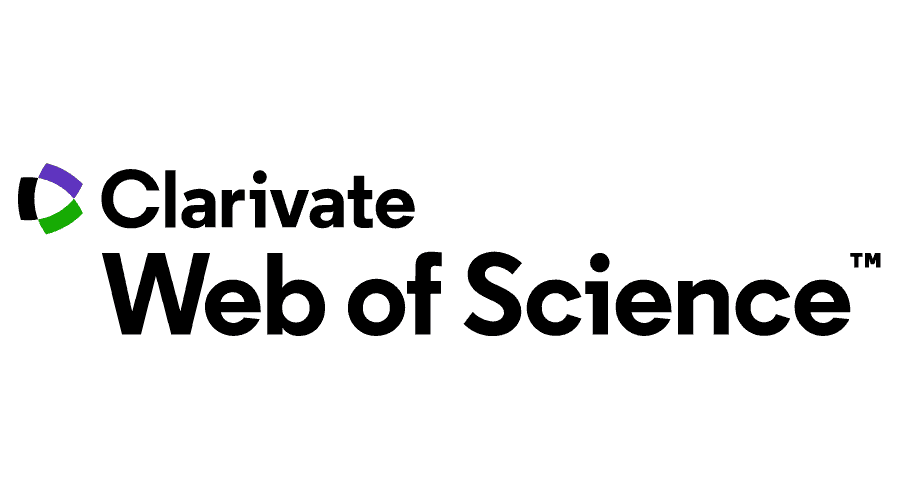Abstract
Research Aims: This study tests the effects of different stakeholder power (shareholders, employees, customers, business partners, community, government, NGOs, and media) on sustainability disclosure using stakeholder salience theory. Extending from this perspective, this study makes separate assumptions for each stakeholder and determines which one had the most power over sustainability disclosure.
Design/Methodology/Approach: The study adopts a journalism (i.e., news framing) approach and observes the element of power in sustainability disclosure using content analysis. The sample comprises of panel data of 140 listed firms in the construction and property sector in Malaysia.
Research Findings: The results show that the employees, community and media power are positively related to sustainability disclosure. This study improves our understanding of the factors determining firms' disclosure by demonstrating that market stakeholders (shareholders, employees, customers and business partners) are not perceived as necessary by managers concerning sustainability disclosure.
Theoretical Contribution/Originality: Common studies view all stakeholders to be taken homogenously into consideration in business decision making. Few studies focus on the power of stakeholders in influencing disclosure is lacking.
Managerial Implication in the South East Asian Context: This study gives insight on which stakeholder is the most important in rank and the finding informs managers to draft a stakeholder management plan and budget, given that such activities can increase firm value.
Research Limitation & Implications: This research however did not investigate the dynamics of stakeholder power along with the existence of other salience factors, i.e., the legitimacy and urgency factors.
References
Amran, A., & Keat Ooi, S. (2014). Sustainability reporting: meeting stakeholder demands. Strategic Direction, 30(7), 38–41.
Bank Negara Malaysia. (2018). Annual Report. In Bank Negara Malaysia Annual Report 2018.
Bohari, A. A. M., Skitmore, M., Xia, B., & Teo, M. (2017). Green oriented procurement for building projects: Preliminary findings from Malaysia. Journal of Cleaner Production, 148, 690–700.
Cho, C. H., Laine, M., Roberts, R. W., & Rodrigue, M. (2015). Organized hypocrisy, organizational façades, and sustainability reporting. Accounting, Organizations and Society, 40, 78–94.
Dong, S., Burritt, R., & Qian, W. (2014). Salient stakeholders in corporate social responsibility reporting by Chinese mining and minerals companies. Journal of Cleaner Production, 84(1), 59–69.
Du, S., Bhattacharya, C. B., & Sen, S. (2010). Maximizing business returns to corporate social responsibility (CSR): The role of CSR communication. International Journal of Management Reviews, 12(1), 8–19.
Dunham, L., Freeman, R. E., & Liedtka, J. (2006). Enhancing stakeholder practice: A particularized exploration of community. Business Ethics Quarterly, 16(1), 23–42.
Eesley, C., & Lenox, M. J. (2006). Firm responses to secondary stakeholder action. Strategic Management Journal, 27(8), 765–781.
Fernandez-Feijoo, B., Romero, S., & Ruiz, S. (2014). Effect of stakeholders’ pressure on transparency of sustainability reports within the GRI framework. Journal of Business Ethics, 122(1), 53–63.
Ferrell, A., Liang, H., & Renneboog, L. (2016). Socially responsible firms. Journal of Financial Economics, 122(3), 585–606.
Fombrun, C., & Shanley, M. (1990). What’s in a name? Reputation building and corporate strategy. Academy of Management Journal, 33(2), 233–258.
Freeman, R. E. (1994). The politics of stakeholder theory: some future directions. Business Ethics Quarterly, 4(04), 409–421.
French, J. R. P. (1956). A formal theory of social power. Psychological Review, 63(3), 181–194.
French, J. R. P., & Raven, B. (1959). The bases of social power. Classics of Organization Theory, 7, 311–320.
Frooman, J. (1999). Stakeholder influence strategies. The Academy of Managment Journal, 24(2), 191–205.
Frooman, J., & Murrell, A. J. (2005). Stakeholder influence strategies: The roles of structural and demographic determinants. Business & Society, 44(1), 3–31.
Gago, R. F., & Antolín, M. N. (2004). Stakeholder salience in corporate environmental strategy. Corporate Governance: The International Journal of Business in Society, 4(3), 65–76.
Ghuslan, M. I., & Mohd Saleh, N. (2017). The influence of board characteristics on sustainability. Journal of Contemporary Issues and Thought, 7, 33–47.
Gianfelici, C., Casadei, A., & Cembali, F. (2018). The relevance of nationality and industry for stakeholder salience: an investigation through integrated reports. Journal of Business Ethics, 150(2), 541–558.
Hapsoro, D., & Fadhilla, A. F. (2017). Relationship analysis of corporate governance, corporate social responsibility disclosure and economic consequences: Empirical study of indonesia capital market. The South East Asian Journal of Management, 11(2).
Harvey, B., & Schaefer, A. (2001). Managing relationships with environmental stakeholders: A study of U.K. water and electricity utilities. Journal of Business Ethics, 30(3), 243–260.
Helmig, B., Spraul, K., & Ingenhoff, D. (2016). Under positive pressure. Business & Society, 55(2), 151–187.
Herremans, I. M., Nazari, J. A., & Mahmoudian, F. (2016). Stakeholder relationships, engagement, and sustainability reporting. Journal of Business Ethics, 138(3), 417–435.
Higgins, C., & Coffey, B. (2016). Improving how sustainability reports drive change: a critical discourse analysis. Journal of Cleaner Production, 136, 18–29.
Hsiang, B., Chyi, I., & Mccombs, M. (2004). Media salience and the process of framing : coverage of the columbine school shootings. Journalism & Mass Communication Quarterly, 81(1), 22–35.
Huang, H., & Zhao, Z. (2016). The influence of political connection on corporate social responsibility——evidence from Listed private companies in China. International Journal of Corporate Social Responsibility, 1(1), 9.
Isenmann, R., & Kim, K. C. (2006). Interactive sustainability reporting: Developing clear target group tailoring and stimulating stakeholder dialogue. Sustainability Accounting and Reporting, 533–555.
Ishak Institute, Y. (2022). Malaysia’s floods of december 2021: can future disasters be avoided? Iseas Perspective, 26(2022), 1–15.
Islam, M. A., & Deegan, C. (2010). Media pressures and corporate disclosure of social responsibility performance information: A study of two global clothing and sports retail companies. Accounting and Business Research, 40(2), 131–148.
KPMG. (2020). The KPMG Survey of Sustainability Reporting 2020. In KPMG Int.
Lewis-Beck, M., Bryman, A., & Futing Liao, T. (2004). The sage encyclopedia of social science research methods. In The SAGE Encyclopedia of Social Science Research Methods. Sage Publications, Inc.
Majdi, S. (2022). Stakeholder Attributes and Sustainability Disclosure in the Malaysian Construction Industry: Stakeholder Salience Perspective. Unpublished Thesis. Universiti Kebangsaan Malaysia
Mitchell, R. K., Agle, B. R., & Wood, D. J. (1997). Toward a theory of stakeholder identification and salience: defining the principle of who and what really counts. Academy of Management Review, 22(4), 853–886.
Mohamed Zain, M., & Janggu, T. (2006). Corporate social disclosure (CSD) of construction companies in Malaysia. Malaysian Accounting Review, 5(1), 85–114.
Moore, G. (2001). Corporate social and financial performance : an investigation in the u . K . Supermarket industry. Journal of Business Ethics, 34(3), 299–315.
Nazari, J. A., Herremans, I. M., & Warsame, H. A. (2015). Sustainability reporting : external motivators and internal facilitators. Corporate Governance, 15(3), 375–390.
Nik Ahmad;, N. N., & Mohamad, N. A. (2014). Environmental disclosures by the malaysian construction sector: exploring extent and quality. Corporate Social Responsibility and Environmental Management, 21(4), 240–252.
Nik Ahmad, N. N., & Sulaiman, M. (2004). Environmental disclosures in Malaysia annual reports: a legitimacy theory perspectives. International Journal of Commerce and Management, 14(1), 44–58.
O’Connor, A., & Shumate, M. (2010). An economic industry and institutional level of analysis of corporate social responsibility communication. Management Communication Quarterly, 24(4), 529–551.
O’Dwyer, B., Unerman, J., & Hession, E. (2005). User needs in sustainability reporting: Perspectives of stakeholders in Ireland. European Accounting Review, 14(4), 759–787.
Omar, N. A., Nazri, M. A., Zainol, Z., Ali, M. H., & Alam, S. S. (2019). Perceived severity of halal violation: CSR and consumer boycott. The South East Asian Journal of Management, 13(2), 183–200.
Patten, D. M. (1992). Intra-industry environmental disclosures in response to the Alaskan oil spill: A note on legitimacy theory. Accounting, Organizations and Society, 17(5), 471–475.
Pérez, A., López, C., & Garcia-De los Salmones, M.D.M. (2017). An empirical exploration of the link between reporting to stakeholders and corporate social responsibility reputation in the Spanish context. Accounting, Auditing & Accountability Journal, 30(3), 668–698.
Perrault, E., & Clark, C. (2016). Environmental shareholder activism:considering status and reputation in firm responsiveness. Organization & Environment, 29(2), 194–211.
Razali, M. N., Kamarudin, N., Adnan, Y. M., Yassin, A. M., & Baharom, Z. A. (2015). Sustainable property development by Malaysian property companies. Proceedings of the 25th International Business Information Management Association Conference - Innovation Vision 2020: From Regional Development Sustainability to Global Economic Growth, IBIMA 2015.
Said, R., Hj Zainuddin, Y., & Haron, H. (2009). The relationship between corporate social responsibility disclosure and corporate governance characteristics in Malaysian public listed companies. Social Responsibility Journal, 5(2), 212–226.
Sakinah Azizan, S., & Ameer, R. (2012). Shareholder activism in family‐controlled firms in Malaysia. Managerial Auditing Journal, 27(8), 774–794.
Siew, R. Y. J. (2017). Critical evaluation of environmental, social and governance disclosures of malaysian property and construction companies. Construction Economics and Building, 17(2), 81–91.
Thijssens, T., Bollen, L., & Hassink, H. (2015). Secondary stakeholder influence on csr disclosure: an application of stakeholder salience theory. Journal of Business Ethics, 132(4), 873–891.
Ufere, K. J., Alias, B., Uche, A. G., & Onu, U. J. (2017). The level of environmental disclosure in listed property sector companies. International Journal of Real Estate Studies, 11(2).
Villiers, C. de, Rinaldi, L., Unerman, J., (2014). Integrated Reporting: Insights, gaps and an agenda for future research. Accounting, Auditing & Accountability Journal, 27(7), 1042–1067.
Vitezić, N., Vuko, T., & Barbara Mörec. (2012). Does financial performance have an impact on corporate sustainability and CSR disclosure. Journal of Business Management, 5(December), 40–47.
Vreese, C. H. De. (2005). News framing : Theory and typology. Information Design Journal + Document Design, 13(1), 51–62.
Weber, J., & Marley, K. A. (2012). In search of stakeholder salience: exploring corporate social and sustainability reports. Business & Society, 51(4), 626–649.
Yahaya, I., & Abidin, N. Z. (2020). The implementation of environmental practices by Malaysian contractors. International Journal of Integrated Engineering, 12(4), 310–318.
Yam, S. (2013). The practice of corporate social responsibility by Malaysian developers. Property Management, 31(1), 76–91.
Zainul Abidin, N., & Pasquire, C. L. (2005). Delivering sustainability through value management. Engineering, Construction and Architectural Management, 12(2), 168–180.
Recommended Citation
Majdi, Suria; Mohd Saleh, Norman; Abdullah, Maizatulakma; and Alias, Norazlan
(2023)
"Stakeholder Power and Sustainability Disclosure: Stakeholder Salience Perspective,"
The South East Asian Journal of Management: Vol. 17:
No.
1, Article 2.
DOI: 10.21002/seam.v17i1.1280
Available at:
https://scholarhub.ui.ac.id/seam/vol17/iss1/2












